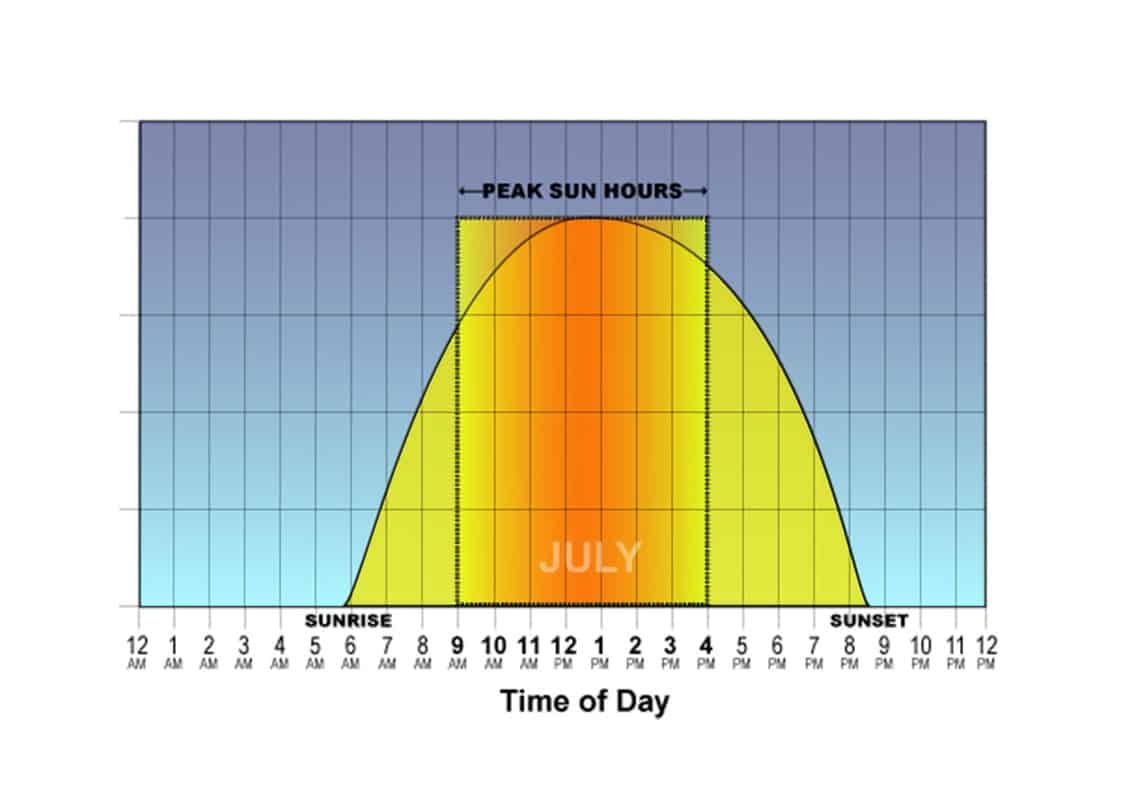Questions About Sunglasses - What are UV rays?
Top 20 most asked questions about sunglasses. UV rays, or ultraviolet rays are high-energy, invisible light rays. The sun, by far, is the biggest source of UV radiation, although there are also man-made sources of UV. Some examples are solaria, tanning beds, and certain lights that are used to cure some medical conditions.
What is UV?
“UV” stands for Ultraviolet. It is a form of electromagnetic radiation that is naturally emitted by the sun. UV light is getting more and more attention in recent years because it becomes clearer how UV radiation works. And how it can cause serious damage to our eyes and skin. ultraviolet rays from the sun may lead to eye desease and eye damage. Examples are macular degeneration, cataract, sunburn of the cornea and (eyelid) cancer.
There are three different types of ultraviolet radiation:
UV-A
Up to 95% of the rays from the sun that reach our skin and eyes are ultraviolet-A. The UV-A rays have the least energy from the three types of UV rays. It causes aging of the skin over time. This type of ultraviolet radiation can cause damage to the retina (back of your eye). BEINGBAR® Sun Eyewear sunglasses protect your eyes from ultraviolet-A. As well as all other brands of sunglasses that meet standards and regulations in the US and Europe and many other places in the world. For instance ultraviolet 400.
UV-B
UVB are the rays that cause sunburns and direct damage to the skin. UV-B is scientifically connected to different types of skin cancers. 5% of the UV rays that reach our skin and eyes are ultraviolet-B. The front of your eyes blocks most of the ultraviolet-B rays but still these rays are believed to be the most damaging to your eyes. As with UV-A, BEINGBAR® Eyewear sunglasses protect your eyes from UV-B, because they meet standards and regulations in the US and Europe and many other places in the world.
UV-C
UV-C is believed to be the most damaging of the ultraviolet rays. Luckily, the natural ultraviolet-C from the sun does not pass the ozone in our atmosphere. So it normally does not reach our eyes or our skin. There are some other sources of UV-C, including man-made sources. Examples of such sources are solaria and tanning beds. You should know that standard sunglasses normally are not suitable to protect from artificial radiation such as tanning beds.
When does UV radiation affect my eyes?
I am sure you have heard the weather man or woman on TV warn you not to go out in the sun in the middle of the day? To be more precise, between 10 am and 2pm, when the sun’s harmhul UV radiation is at it’s strongest. But don’t be mistaken and think that it is completely safe for your eyes (and skin) when you go out before 10am or after 2pm. There is always sun during the day, and although there is a clear peak during those hours, there still is high intensity UV radiation right before and right after those times.

Sun intensity curve
Where does UV radiation affect my eyes most?
Another time when UV can damage your eyes is when you are in environments where there is a reflective surface. For instance a road, or snow, water and even sand (glass is made of sand, so this makes sense). These surfaces react as a mirror and horizontally reflect the sun’s UV rays. This can significantly amplify the rays’ intensity. Make sure you always wear sunglasses in these environments. If you choose polarized sunglasses, they will filter out horizontally reflected light. The special polarized lenses are manufactured to only let through part of the light.
When you go hiking high in the mountains you are closer to the clouds which increases the risk of damage to your eyes and the skin around your eyes due to more UV radiation. The Equator has also more sun strength, so if you live there or spend a lot of time in an area closer tot he Equator you should know that you’re more exposed to harmful radiation.
Avoid tanning beds, certain lamps that are meant to help cure skin conditions (ask your doctor for a better alternative that does not have these UV side effects). Also watch out for photosensitizing prescription drugs
When do I need to wear sunglasses exactly? I always thought it is only a requirement when it’s sunny and the sky is clear
It's logical that you might think that, but unfortunately it's not true. It’s best to wear your sunglasses as often as possible, even when it's not sunny. The sun emits damaging ultraviolet (UV) rays that can damage the eyes. On beautiful, sunny days, but also on more cloudy and overcast days. Some of the harmful UV rays go through clouds and can still damage your eyes, even when you’re not aware of it. So make it a habit to wear your sunglasses when you go outside. Or at least as often as possible.
What are my options to prevent UV damage to my eyes and eyelids?
- You can limit your time outside during the sun’s peak intensity hours
- You should invest in a good pair of sunglasses that block 100% of UV rays. This is the best way to protect your eyes from the sun. Most quality sunglasses have a UV 400 label and will block 99% to 100% of UV radiation. Make sure you don’t pick a model that is too small. These might look cute but do little to protect your eyes. The best sunglasses from UV protection point of view also shield your eyes from UV radiation entering from the sides
- Some contact lenses provide UV protection. This is a nice little feature, but please remember that they don't cover your eyes and eyelids completely. So even if you wear these, you need sunglasses to cover the rest.
- Use specific sunblock made for your face and the area around your eyes. It should be specifically designed and manufactured fort his purpose otherwise it can hurt your eyes or feel very uncomfortable when it gets in your eyes.
Questions About Sunglasses - Which sunglasses lens color is best?
There are no specific UV blocking qualities linked to the color of your sunglasses lenses. Different colors do have an effect on how clear you see in certain environments and weather conditions. But for the rest it's just a matter of taste is a personal choice and doesn't affect how well sunglass lenses protect your eyes from UV light. Amber/brown coloried lenses are popular because they are comfortable to wear and enhance the natural colors least. Also gray is a popular color.
Darker lens means better UV protection?
This is not necessarily true. Darker lenses block more light compared to lighter tint sunglasses lenses. But they do not necessarily provide more UV protection. High quality sunglasses provide 99 to 100% UV protection, regardless of lens color.
What are the different types of sunglasses lenses?
Mineral versus Organic lenses
There are many, many types of sunglasses lenses available. For starters there are lenses made from glass (mineral lenses) and lenses made from plastics (organic lenses). They both have their specific benefits (price, durability, safety).
Different colors and tints lenses
Then there are different lens colors and tints. We have written an extensive article on the topic that you should read. Lens color can have an effect on mood and the clarity of your image, based on different environments
Polarized lenses
Sunglasses with polarized lenses generally provide greater comfort because they reduce glare from bright light reflecting off flat, often horizontal surfaces. Examples are water, snow, roads and even sand.
Mirrored lenses
These lenses have a reflective coating applied to the front of the lens. This reflective coating limits the amount of light that can pass and prevents it from entering your eyes. In very bright environments this makes for a highly comfortable wear. And they give yhe wearer a very distinct look as the colors are often bright and flashy. They also mask the eyes of the wearer which can be a benefit for some professions and circumstances. Great for outdoor sports such as watersports, mountain biking and skiing
Anti-reflective lenses (coating)
Sunglasses that have anti-reflective lenses, have a special coating applied to the lenses. This coating prevents light from reflecting off the surface of your sunglasses. This reduces glare and makes them comfortable to wear.
Gradient lenses
Gradient lenses are exactly what the name implies. They are darker colored on the top and are gradually lighter at the bottom of the lens. These lenses are used often in the car, because they shield your eyes from other passing cars and overhead sunlightwhile the lower part of the lens gives full visibility on the dashboard inside.
Photochromic lenses
these adjust their level of darkness based on the amount of light they are exposed to. The material reacts to the amount of light. There are also contact lenses with this photochromatic feature. They no not necessarily protect better against UV radiation though.
Prescription sunglasses
These sunglasses with corrective lens is made specifically for the wearer. For this you need a prescription. These are available for many eye conditions, including presbyopia. Almost any type of sunglasses can be made with progressive lenses, bifocals or trifocals. These are made specificially for the wearer and are usually quite expensive. some people therefore choose to just wear their spectacles with a sun cover. This is a larger than usual type of sunglasses that are big enough to fit over your spectacles and block UV light
Does my child need sunglasses too?
Yes, this really is essential! Children are more at risk from UV radiation because they spend (or should spend!!) more time outdoor. UV damage builds up over your full lifetime. So the sooner you provide UV protection to your child, the longer he or she will enjoy healthy eyesight.

Children's sunglasses are highly relevant
What shades options do I have as a spectacles wearer?
Photochromic lenses are an excellent choice for sun protection outdoors if you need corrective lenses. They provide 99 to 100% protection from the sun’s UV rays as standard sunglasses. And they and darken automatically in brighter environments. In some cases, photochromic lenses can eliminate your need for a separate pair of prescription sunglasses.
Are sunglasses for specific sports a scam?
Yes. Sports eyewear in general tends to be safer than regular sunglasses because the lenses and frames are made of special materials that are unlikely to shatter if struck and can give you the benefits of both sunglasses and protective eyewear. Examples are skiing goggles and sunglasses for golfers. Also, certain tints can enhance your vision for certain sports. For example, amber and brown lenses are popular with golfers because they enhance the contrast between the ball and fairways, greens and the sky.
Are sunglasses produced sustainable and ethical?
This is a question that cannot be answered with yes or no. I know our sunglasses are. They are made with respect for the people who make them and the environment. Products are made from fastgrowing bamboo and from sustainable wood. They are shipped in 100% plastic free packaging.
But there are many, many sunglasses manufacturers in the world. If you buy your sunglasses from a respected brand that has a lot to lose when it comes to reputation, chances are these products are entically made. I recommend you always check the website of the brands you're interested in, to see what they have to say from a CSR perspective.

BEINGBAR Eyewear is made from fastgrowing bamboo
This concludes this article about the most commonly asked questions about sunglasses. We will do more of this type of post in the future, so please reach out if you have any specific question in mind.
Would you like to read more about quality eyewear and sunglasses? Or are you interested in eyewear that takes a different, more eco-friendly approach? Sunglasses made with natural materials and true principles? Then look no further. BEINGBAR eyewear is your best choice. Visit the main page to see more.


